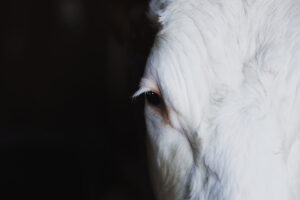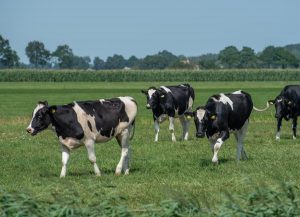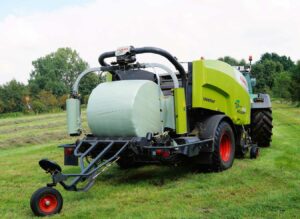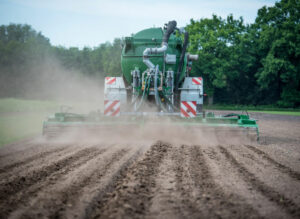Nuria Garcia
The elimination of quotas in the EU has led to a significant increase in milk production with more cows and higher yields per animal. In the case of Ireland, where there is a model based on grazing, many variables must be fine-tuned to achieve an optimal economic benefit. The type of pasture and the cow breed are among them.
Ryegrass is the most common species in wet climate areas as it is the most economical feed for dairy cows. A four-year study compared the economic performance of two types of perennial ryegrass (Lolium perenne L.) pasture planted with or without white clover (Trifolium repens L.). White clover is a legume and as such has the property of nitrogen fixation, so the nitrogen fertilizer needs of the soils are significantly reduced.
Similarly, in recent years the interest in working with cattle crossbreeding has increase because of the best yields obtained as a result of heterosis (hybrid vigor) along with better reproductive performance. Three different types of cows were used in this simulation since the genotype has a great influence in grazing animals. The genotypes studied were:
- Holstein-Friesian
- Jersey – Holstein-Friesian
- Norwegian Red – JxF (double crossover)
Six production systems were created (2 types of pasture x 3 cow genotypes). Production systems were modeled using Moorepark’s Milk Systems Model (stochastic economic simulation model) under two scenarios, one where the independent variable was the type of pasture, and the other the type of cow. The analysis was completed considering a price range for milk and calves, as well as re-seeding programs.
Adding white clover to the ryegrass pasture increased annual profitability
In the scenario with the pasture type as independent variable, the analysis showed that for a milk price of 0.34 USD/L, adding white clover to the ryegrass pasture increased annual profitability by 354 USD/ha. In this scenario, the Jersey x Friesian cows were the most profitable (3,028 USD/ha), followed by the double-crossed (2,895 USD/ha), and finally the Friesians (2,867 USD/ha).
On the simulation with the cow breed as the independent variable, the annual net gain per cow was 149 USD more for pastures with white clover compared to those of ryegrass only. The Jersey x Friesian cows were the most profitable (1,013 USD/cow), followed by the Friesian (993 USD/cow) and the double-cross (965 USD). The system that produced the largest net profit was Jersey x Friesian grazing pastures which included white clover (3,196 USD/ha).
The results of this simulation therefore revealed a higher profitability of milk production when ryegrass pastures were complemented with white clover, even if the costs of handling and reseeding were high. The simulation also showed that Jersey x Friesian was the most profitable genotype, regardless of the milk price or value of the calves. Therefore, the system with the highest profitability in this simulation was Jersey x Friesian cows grazing ryegrass and clover mix pastures.
Reference
B. McClearn, L. Shalloo, T.J. Gilliland, F. Coughlan y B. McCarthy. 2020. An economic comparison of pasture-based production systems differing in sward type and cow genotype. Journal of Dairy Science. 103: 4455-4465.
© 2020 Dairy Research Review. All Rights Reserved.











